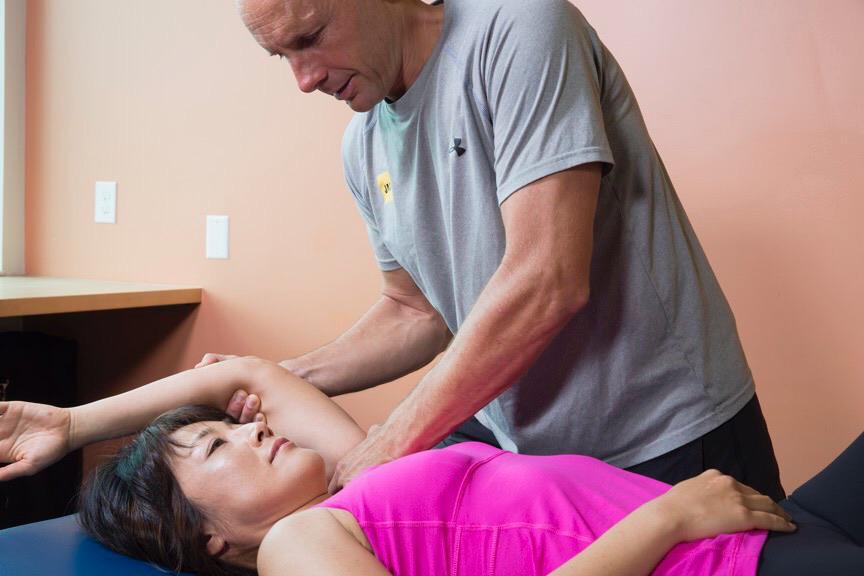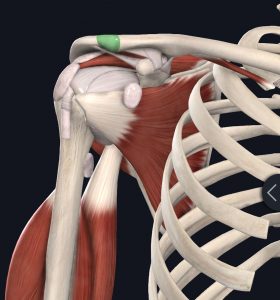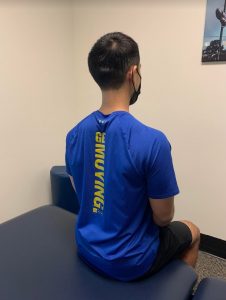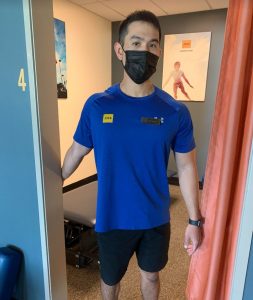
Have you been experiencing more pain and discomfort in your shoulder lately, especially while doing any overhead motions?
Shoulder pain is one of the most common body parts that physical therapists treat at JACO Rehab. Whether you are a construction worker, overhead athlete, or an office worker, you can fall victim to shoulder pain for various reasons.
One of the most common diagnoses of shoulder pain is called shoulder impingement. In this blog, we will describe shoulder impingement and why it occurs. We will also discuss treatments for this type of shoulder pain and the “dos and don’ts” to make sure your recovery goes smoothly.
What is Shoulder Impingement?
The term shoulder impingement is a simple way of describing this shoulder injury, although it can be more complex than just an “impinged” joint.
The shoulder joint is made up of two connecting bones: the shoulder blade (scapula) and the humerus. They work together to allow you to move your arm in many different directions – the shoulder is a very flexible joint.
Flexibility is good, but too much movement isn’t stable. Your shoulder joint has muscles called the rotator cuff to ensure joint stability when you reach and lift.
The shoulder is also surrounded by other muscles, many of which fit into small spaces and grooves around the joint.
Shoulder impingement occurs when the shoulder joint’s surrounding muscles aren’t promoting the best alignment. The result is excessive friction on the muscles or soft tissues in the nooks and crannies, causing pain with certain arm movements like overhead reaching.
Too much friction can cause frays or tears in the involved structure, so best not to ignore it.
If you have an impingement, it usually refers to the irritation of the muscles above the humerus and below the acromion of the shoulder blade due to a space issue. The soft tissues involved can be the:
- Supraspinatus (a rotator cuff muscle)
- Long head of the biceps tendon
- Subacromial bursa
The space between the humerus and the acromion can be influenced by inflexibility, weakness of surrounding musculature, bone spurs/osteophytes, or arthritis.
- Structures of the Shoulder Beneath the Acromion (acromion highlighted) | Images courtesy of Complete Anatomy
Symptoms of Shoulder Impingement
A shoulder impingement causes pain during or after overhead reaching, lifting, and sometimes pushing. It is acquired over time and usually does not have a specific cause like a fall or trauma.
Depending on the injured structure, your pain can be located in the front or top of the shoulder.
If pain becomes so severe that it is difficult to sleep, reach, or lift the arm overhead without weight, this may be signs of a tear in the rotator cuff or biceps tendon.
Rotator cuff tears can be treated conservatively or surgically depending on the size and loss of function.
Do I need an MRI?
An MRI assesses the structural integrity of your shoulder and is great at capturing soft tissue injuries, unlike an x-ray. However, they’re not always necessary right away.
Shoulder impingements are usually acquired over time with repetitive overhead activities. If you’ve fallen on your arm or endured some type of trauma, an MRI may be more appropriate.
If conservative care hasn’t improved your shoulder impingement, your doctor may order an MRI to determine the integrity of the soft tissue structures.
At that point, the MRI could help identify why the shoulder isn’t responding to treatment. It can guide your clinicians in formulating a treatment plan for your specific needs. (1)
And yes, that could mean surgery if there is a large tear impeding your arm function and causing significant pain.
How Can Physical Therapy Help with Shoulder Impingement?
Physical therapy is the conservative option for treating a shoulder impingement. In most cases, therapists can treat your shoulder before it endures further injury.
A physical therapist is able to assess your shoulder and formulate an individualized program that will help with the recovery process.
Patients will restore their pain-free mobility and strength with hands-on treatment, often involving stretching and strengthening of targeted areas.
A postural assessment can also help reduce the stress on the shoulder during stationary activities. In fact, posture plays a large role in shoulder positioning when reaching overhead during dynamic activities, too.
Improving muscle coordination and strength around the shoulder joint, such as the rotator cuff and upper back, can help address the muscle imbalances that cause symptoms.
Once the pain, mobility, and strength have improved, a physical therapist can help you gradually return to the challenging activities. You’ll practice how to reach and lift safely while reducing stress on the shoulder.
Let’s learn how physical therapists help treat impingement.
How to Fix Shoulder Impingement
Treatment should aim to improve shoulder alignment and muscle coordination during overhead reaching and pushing. The goal is to allow irritations to subside, create adequate space for surrounding structures with specifically-targeted exercises, and prevent further injury.
Although everyone’s circumstance is different, there are similarities between shoulder impingement cases. This includes postural deficits and poor muscular coordination around the shoulder, which often go hand-in-hand.
Depending on your presentation, therapists will often address these things first (as tolerated):
- Lengthen typically shortened muscles, like the pecs
- Strengthen typically weaker muscles, like the upper back and rotator cuff
- Apply coordination and strength gains to overhead movements and lifting
Your therapist knows how to tailor your exercise program specifically to your symptom presentation. If you’re not sure what to do, don’t hesitate to reach out to JACO Rehab!
3 Exercises to Start Now
Until you see physical therapy, you can start with these light exercises that involve gentle stretching or strengthening of the shoulder.
Doing these alone will not eliminate the problem. Make sure you’re still planning to get an evaluation.
Perform the following exercises gently. Do not push past pain. If it’s painful, stop and talk to your therapist.
Blade Squeeze
- Start Seated
- Shoulder Blade Squeeze
1. Sit up straight and pinch your shoulder blades back and down. Do not shrug.
2. Hold for about 5 seconds. Release and repeat for 10 more repetitions.
3. Perform exercise 3-5x a day.
This is best to incorporate into breaks during seated work on the computer.
Pec Stretch
1. Find a doorway and place the hand of your affected arm on the doorframe. A 45 degree angle is a good position to start.
2. Gently turn your body away from the doorway and hold for about 30 seconds. You should feel a stretch in the front of the chest.
3. Perform this exercise about 3-5x a day.
Whatevers
1. Keep your arms close to your body and pull your shoulder blades down and back.
2. Raise your forearm to 90 degrees and only move the forearms to the side until you feel tension in the back of your shoulder blades. You do not need to go very far out with your forearms.
3. Hold for 5 seconds, then release and repeat for 10 more repetitions.
4. Perform this exercise 3-5x a day.
BONUS: To make this a rotator cuff strengthening activity, hold a band in both hands and pull it apart. Hold for 3 seconds, then release. Repeat 8-10 times without pain.
Exercises to Avoid with a Shoulder Impingement
If you’re attending rehab for your shoulder, the last thing you want to do is undo any progress by doing painful activities.
You want to avoid anything that will cause more pain to that shoulder. That includes activities that places stress on the front of the shoulder or could enclose the space under the shoulder blade’s acromion, like overhead lifting.
Here are some activities you’ll want to avoid until your symptoms are under control:
- Performing any repetitive overhead movements, such as throwing and freestyle swimming
- Weightlifting exercises that involve lifting overhead and pushing
- Triceps dips, chest flies/presses, or wide pushups
Good Luck!
Your shoulder can recover if you catch this problem early! Make sure you talk to your doctor about seeing a therapist at JACO Rehab. We will guide you in the right direction.
Written by Joey Torigoe, DPT
Citations
1. “Shoulder Impingement and Associated MRI Findings.” JAOCR, https://jaocr.org/articles/shoulder-impingement-and-associated-mri-findings.




